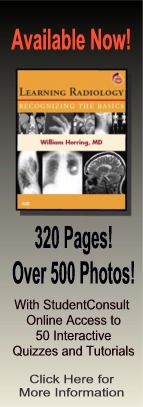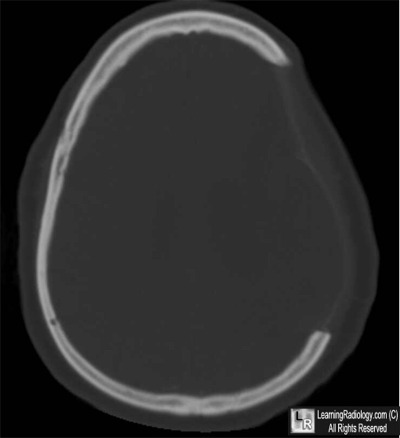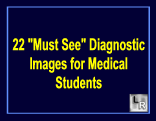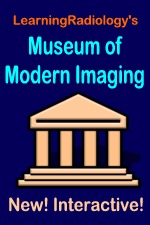| Cardiac | |
|---|---|
| GI | |
| Bone | |
| GU | |
| Neuro | |
| Peds | |
| Faculty | |
| Student | |
| Quizzes | |
| Image DDX | |
| Museum | |
| Mobile | |
| |
Misc |
| Videocasts | |
LearningRadiology Imaging Signs
on Twitter
![]()
Follow us on
What is the most likely diagnosis?
- 39 year-old with recent history of trauma
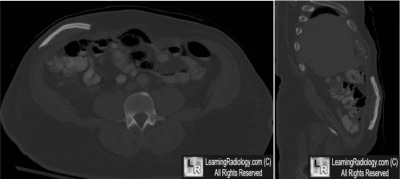
Axial and sagittal CT scans of abdomen with bone window
- Ossified scar
- Heterotopic ossification
- Retained foreign body
- Skull flap
- Peritoneal drainage catheter
Additional Image - Axial CT scan of another body part
![]()
Answer:
.
4. Skull flap in abdominal wall
.
.
More (Click Discussion Tab)
Skull Flap in Abdominal Wall
General Considerations
- On occasion, a portion of the skull may be emergently removed to relieve increased intracranial pressure (decompressive craniectomy)
- Mostly performed for acute subdural hemorrhage
- The remaining dura mater may be sewn together and the patient may wear a protective helmet
.
This Week
39 year-old with recent history of trauma |
Presented as a series of cards, this podcast asks some of the most common causes of neuroimaging findings and diseases making it ideal for a quick review. Can be used as either an audio only or audio/video podcast.; Complements Video Flashcard Podcasts 15, 21,25, 38, 42, 46 and 47. |
Some of the fundamentals of interpreting chest images |
The top diagnostic imaging diagnoses that all medical students should recognize according to the Alliance of Medical Student Educators in Radiology |
Recognizing normal and key abnormal intestinal gas patterns, free air and abdominal calcifications |
Recognizing the parameters that define a good chest x-ray; avoiding common pitfalls |
How to recognize the most common arthritides |
LearningRadiology
Named Magazine's
"25 Most Influential"
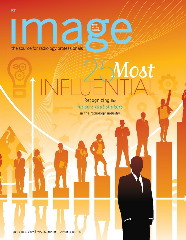
| LearningRadiology.com |
is an award-winning educational website aimed primarily at medical students and radiology residents-in-training, containing lectures, handouts, images, Cases of the Week, archives of cases, quizzes, flashcards of differential diagnoses and “most commons” lists, primarily in the areas of chest, GI, GU cardiac, bone and neuroradiology. |

